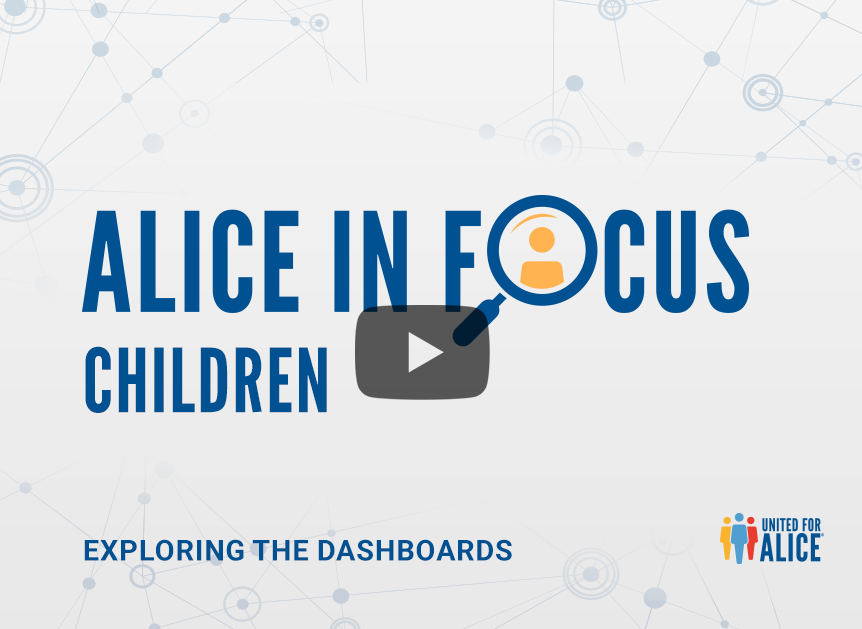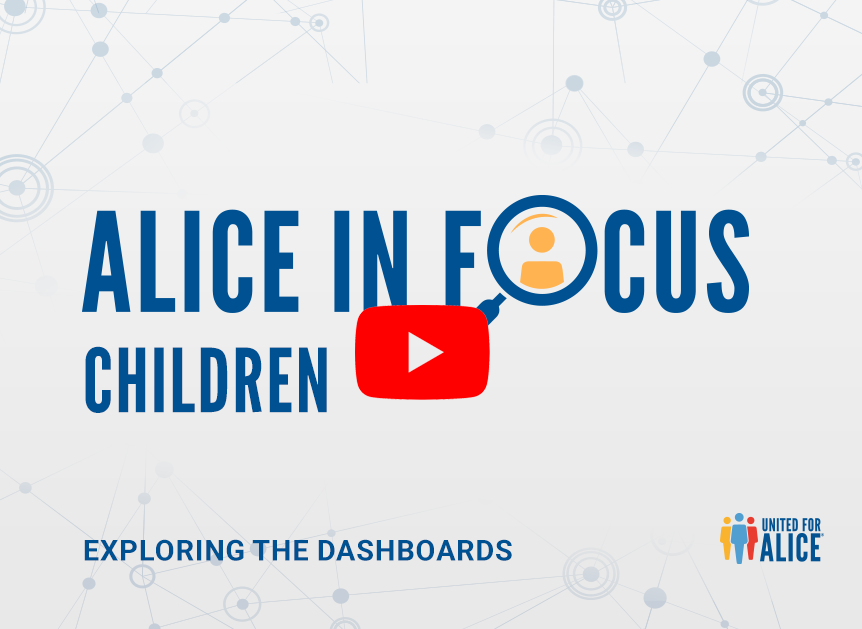
Research Center
ALICE In Focus Series
Children in Financial Hardship
According to the outdated Federal Poverty Level, 16% of children in the U.S. lived in poverty in 2022. Yet United For ALICE data shows that another 34% — more than twice as many — were also growing up in hardship, in households that earned above the poverty level but less than what it costs to afford the basics. These households are ALICE: Asset Limited, Income Constrained, Employed.
The reality is that between families in poverty and those that are ALICE, half (50%) of children in the U.S. in 2022 lived in households with income below the ALICE Threshold, struggling to afford the basics of housing, child care, food, transportation, health care, technology, and taxes in their communities.
Use the Data Dashboard, Local Maps, State Briefs & Sponsors, Committees, and Resources tabs below to learn more about children experiencing financial hardship.
Local Maps
While there are ALICE children in every community across the U.S., children's demographics, household characteristics, and access to resources vary by location. The interactive map on this page shows the percentage of children below the ALICE Threshold in partner states by Public Use Microdata Areas (PUMAs) — a U.S. Census Bureau geography made up of groupings of about 100,000 people. Contact us for 2019 PUMA data, which can be provided if available for your area.
How to Use This Tool
- Select an ALICE Partner State or select 'U.S.' to see national data
- Select both a Category (like Age) and Sub-Category (like School-Age). When a new category is selected, the map will disappear until a new sub-category is selected.
- View the table below the map to see the number of children in each group by location
Technical Details
- Sources: ALICE Threshold, 2022; U.S. Census Bureau, American Community Survey, PUMS, 2022.
- Rounding: Percentages in the ALICE Children Data Dashboard may differ +/- 1% from percentages included in the state and national Research Briefs due to rounding. Total numbers are presented in the dashboard for calculation.
- Race/Ethnicity: All racial categories except Two or More Races are for one race alone, non-Hispanic. The Hispanic group may include households of any race.
- Selected Variables: All variables in this dashboard come from the American Community Survey. To see how these variables are defined and named in this dashboard, download the DATA DICTIONARY
- Missing Data and Grand Totals: Any group with 500 or fewer children is suppressed (not shown) to maintain accuracy and confidentiality. Grand totals exclude any sub-populations that are too small to display (sums in column).

